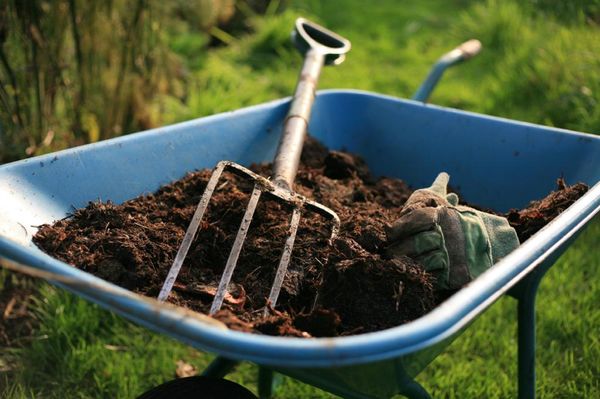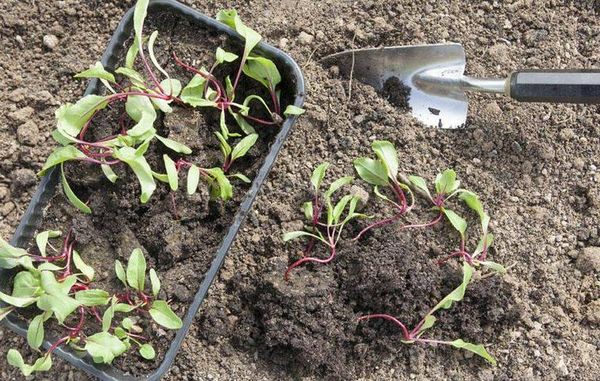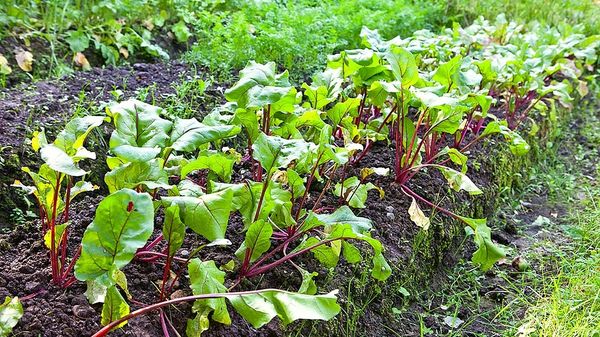Gardeners rarely think about beet growing requirements and what kind of soil she likes. Often planted it without prior preparation of the soil and compliance with the temperature regime. It is not rational. The soil that meets all the requirements of the crop, increases the yield and quality of root crops several times.
Table of contents
What kind of soil loves beets
Suitable for beet soil types mechanically cultivated by organic matter loam and sandy loam. Such soils are easily processed, evenly distribute and retain moisture in the root zone, are well aerated and retain heat.
Much worse the plant will develop on alumina. They do not warm up well, they practically do not let air and moisture through. Water constantly stagnates on their surface, disrupting the already low aeration. The development of a vegetable on such land is late, the yield is falling.
Unsuitable for beet sandstones. They quickly get warm, are processed and pass moisture. But the increased capacity leads to the leaching of minerals and microflora in the deep layers of the soil, the beets practically do not receive food.

Too acidic soil with a pH of less than 6, and alkaline more than 7.0. A significant deviation in any direction leads to a decrease in yield, and often to the death of the plant.
Sour soil becomes the cause of damage to the rot of the core, eating disorders. Alkaline earth violates the absorption of many minerals and reduces the formation of chlorophyll. Plants form weak roots, poorly take root, the leaves often turn yellow.
Acidic environment makes mobile heavy metals - mercury and lead, entering the earth from the polluted environment.In neutral soil they are bound, and in acidic soil they can accumulate in plant tissues. Any vegetable grown on an excessively acidic soil is potentially hazardous to health.
Type determination and soil preparation
Before preparing the soil determine its mechanical composition. For determining loam, you need to roll a small amount of soil in your palm. The earth is easily formed into a sausage, but when deformed it collapses. When squeezed in the hand sandy loam formed into a lump, but quickly disintegrates.
These types of soil do not need to be structured. It is enough to add mineral elements to nourish the vegetable during the growing season.
If during digging the earth forms large lumps, sticks to the feet and shovel, this alumina. To increase the fertility, coarse-grained river sand of 20–40 kg per 1 m2 is introduced into it. After sanding, alumina is suitable for growing beets in the first year.
Sandstones practically do not form a lump during compression in the hand, quickly crumble. On this type of soil, beets are planted only after structuring, achieving sealing and binding properties.
Peat, humus, compost and clay flour of 20 kg per 1 m2 are introduced.At the initial stage of processing, they plant carrots, onions, strawberries, and beets in 1-2 years.
Fertilization
Fertilizers per 1 m2:
- ammonium sulphate 30 g;
- superphosphate 40 g;
- potassium sulfate 15 g;
- ammonium nitrate 20 g (spring).
Beet susceptible to boron deficiency. Lack of substance leads to chlorosis of the growing point, infertility, the formation of hard tissue in the roots. Bor is applied annually at 3 g per 1 m2.
On the bed for beets fresh manure is made 1-2 years before planting under previous cultures. Manure greatly reduces the yield of the plant, stimulates the development of the vegetative mass, gives foreign flavor to the roots.

How to regulate acidity
Acidic soil is most often formed in damp, low-lying areas with constant stagnation of spring water. A certain role is played by the composition of winter and spring precipitation.
If you dig the sour earth, at a shallow depth you can see light layersimilar to ash. On it plentifully grow horsetail, pickle, plantain, sorrel and veronica.
The abundance of plants: quinoa, coltsfoot, nettle, clover, chamomile pharmacy, wheat grass and bindweed indicate on neutral indicators of acidity.
Approximate level of soil acidity is shown litmus test. They can be purchased at garden centers with instructions for use.
The best substance to reduce the acidity of the soil calcium carbonate. It is found in ground limestone, dolomite, cement dust, chalk, wood ash, bone meal or marl.

Sample application rates ground limestone per 1 m2 different types of soil (pH less than 4.5 / pH 4.6-6.0):
- sandy 400/100 g;
- sandy loam 600/150 g;
- loamy 800/350 g;
- alumina 1100/500
Ways acidification of alkaline soil depends on the deviation of indicators from pH 7.0. If the acidity is reduced by 1-1.5 units, use on 1m2: high-moor peat (10 kg) or fresh manure (10 kg), cover the earth's surface with sphagnum moss, coniferous litter or sawdust before winter.
Fast acidification increase guarantees the introduction of mineral elements per 10 m2: colloidal sulfur 1 kg or ferrous sulfate 0.5 kg.
In the spring the prepared site is harrowed,form a bed on a lighted place. In low-lying areas with close groundwater deposits, beets are grown on a ridge with ridges. Ridge height 30 cmwidth to 120 cm. Ridges are cut before seeding.

What temperature is needed for beets
Beet seeds sown after warming up the soil at a depth of 10 cm to + 8 + 10 degrees. Seeds are able to germinate at a minimum of + 5 + 6 degrees. But planting in the cold land delays the development of the plant and increases the risk of fungal diseases.
They also focus on the average indicators of the region’s recent spring frosts. The shoots are able to withstand short frosts up to -2 degrees, but after that they shoot. Therefore, the seeds are sown only after establishing a stable temperature of the soil over 10 degrees and air over 15 degrees.
When the air temperature drops in the evening below +1 degrees after sowing seeds, the bed is better to cover.

To do this, use covering materials: newspapers, cardboard or spandbond. Materials should not touch shoots. Plants can be without light for up to 7 days.
Optimum temperature after germination and during the formation of roots + 15 + 18 degrees, and during the formation of root crops + 20 + 25 degrees.
Structuring and preparing the soil does not guarantee an annual high yield of beets. It is advisable to change the place of vegetable growing annually, returning back only after 3-4 years. To do this, make a plan of crop rotation of vegetables on the site, carefully cleaning and fertilizing it every year.
